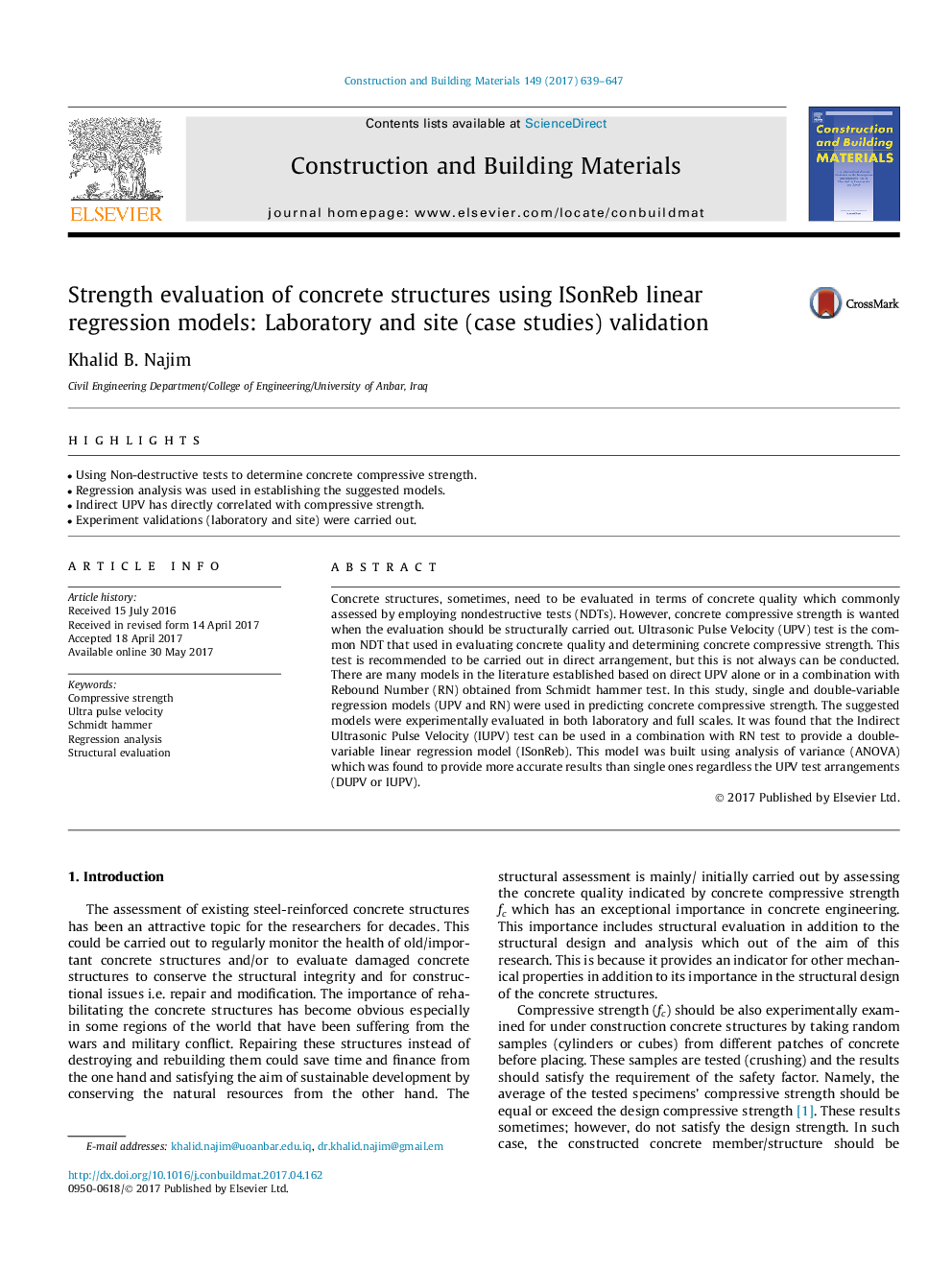| Article ID | Journal | Published Year | Pages | File Type |
|---|---|---|---|---|
| 4913106 | Construction and Building Materials | 2017 | 9 Pages |
Abstract
Concrete structures, sometimes, need to be evaluated in terms of concrete quality which commonly assessed by employing nondestructive tests (NDTs). However, concrete compressive strength is wanted when the evaluation should be structurally carried out. Ultrasonic Pulse Velocity (UPV) test is the common NDT that used in evaluating concrete quality and determining concrete compressive strength. This test is recommended to be carried out in direct arrangement, but this is not always can be conducted. There are many models in the literature established based on direct UPV alone or in a combination with Rebound Number (RN) obtained from Schmidt hammer test. In this study, single and double-variable regression models (UPV and RN) were used in predicting concrete compressive strength. The suggested models were experimentally evaluated in both laboratory and full scales. It was found that the Indirect Ultrasonic Pulse Velocity (IUPV) test can be used in a combination with RN test to provide a double-variable linear regression model (ISonReb). This model was built using analysis of variance (ANOVA) which was found to provide more accurate results than single ones regardless the UPV test arrangements (DUPV or IUPV).
Related Topics
Physical Sciences and Engineering
Engineering
Civil and Structural Engineering
Authors
Khalid B. Najim,
